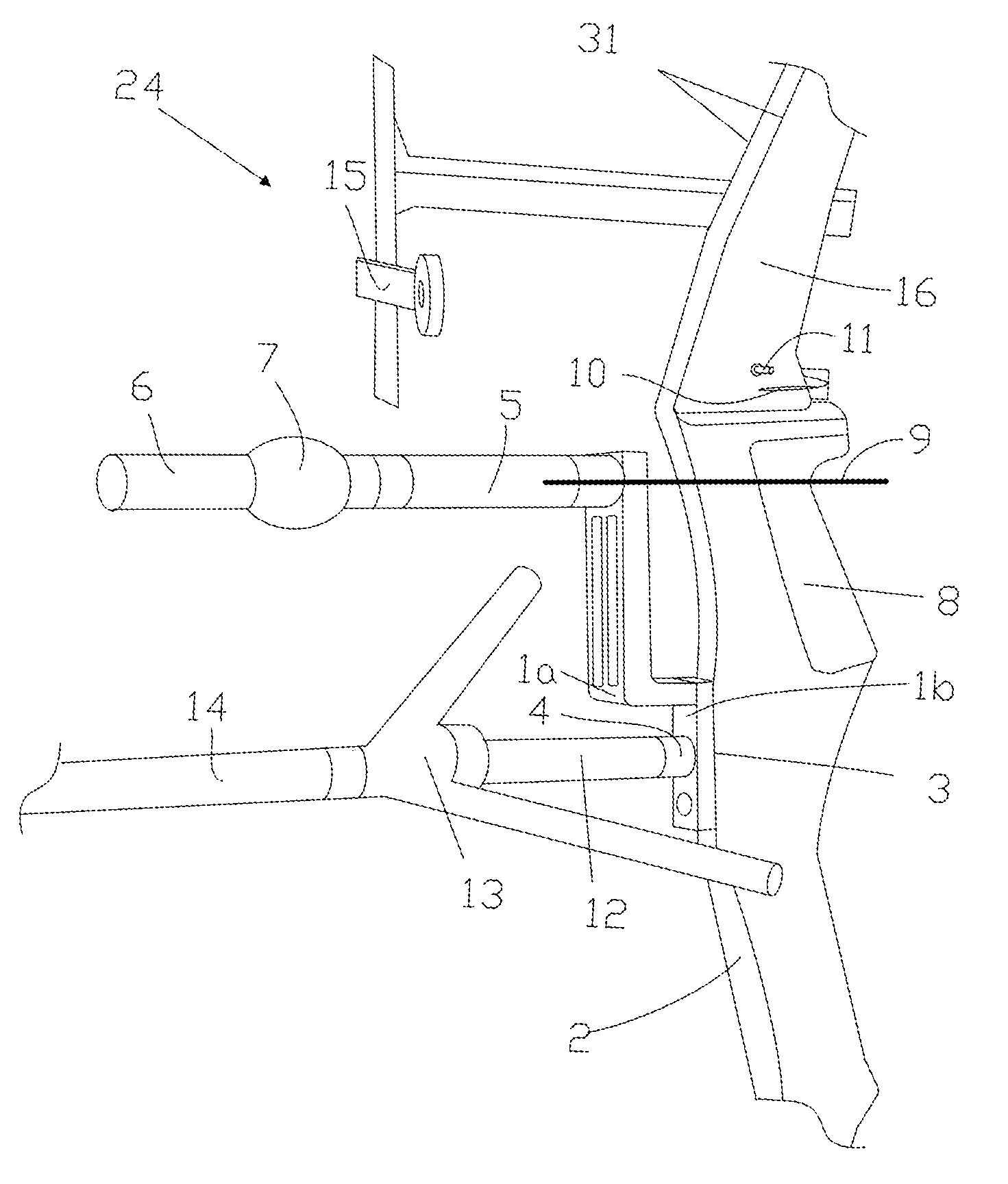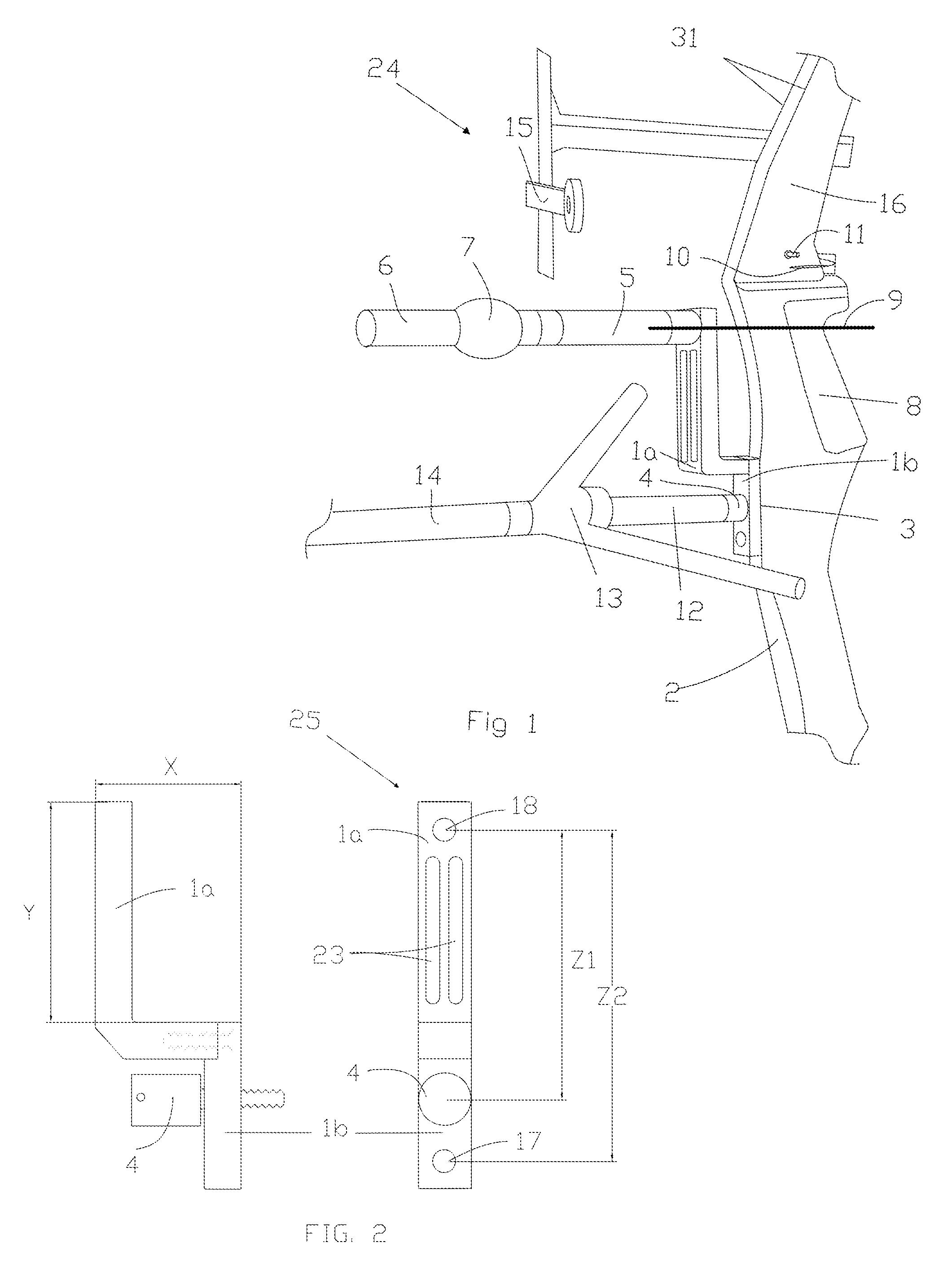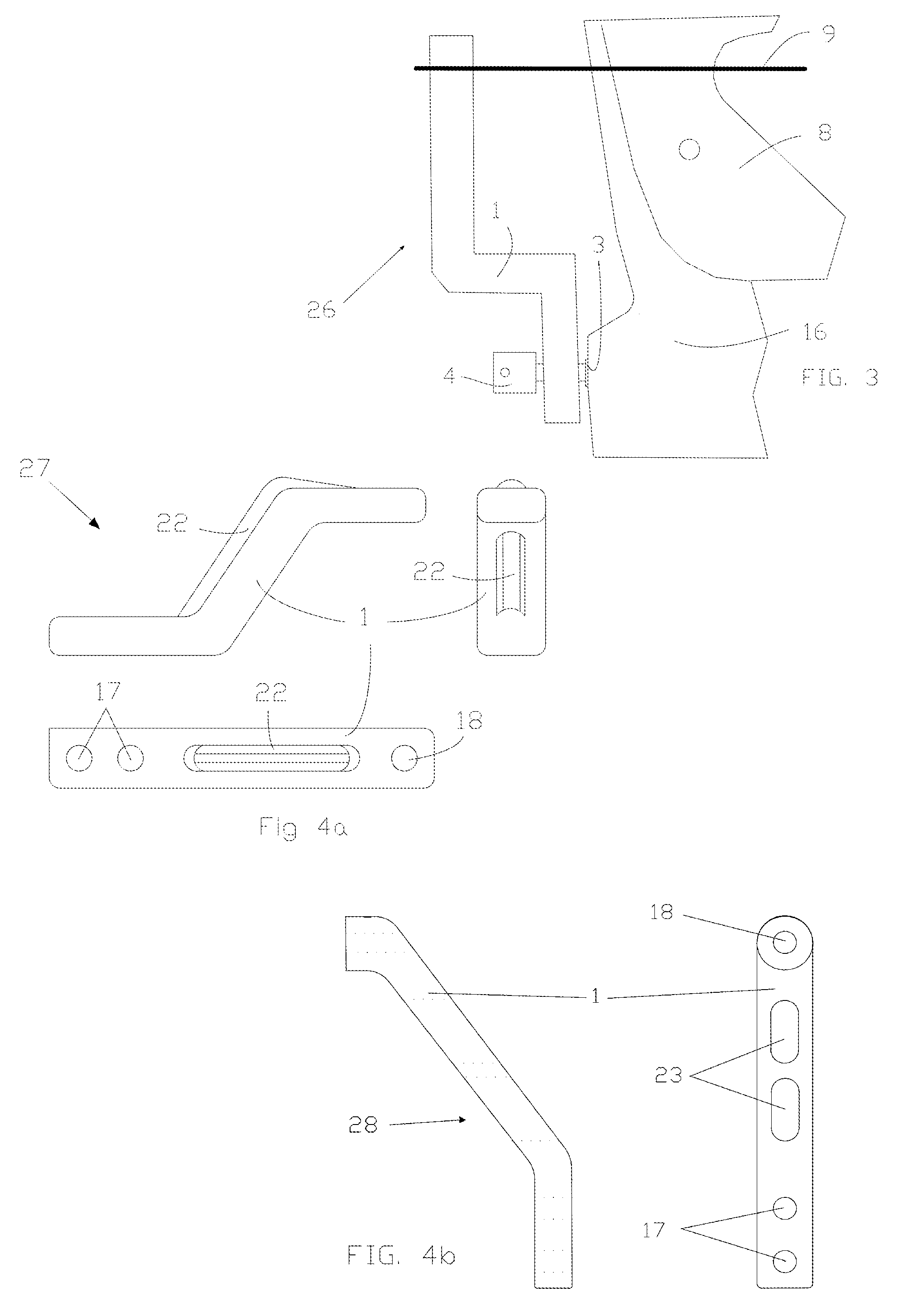Torque Reduction System for Archery Bows
- Summary
- Abstract
- Description
- Claims
- Application Information
AI Technical Summary
Benefits of technology
Problems solved by technology
Method used
Image
Examples
Embodiment Construction
[0031]Turning now to FIG. 1, a recurve archery bow including stabilization elements and accessories attached is shown generally by reference number 24. A two-piece torque reduction system 1a and 1b is attached to the bow riser 16 with bolt 4. Other optional stabilization elements, for example, stabilizer rod 14, extension rod 12, v-bar attachment with two rods 13, are also attached to mounting surface 3 on the backside 2 of the bow 16. Other accessories attached to the bow riser 16 include a sight with extension arm 15, arrow rest 10, and plunger button 11. The energy absorbing element 7, mounting rod 5, and cap weight 6 are shown attached to the upper portion of the torque reduction device 1a. Maximum benefit occurs when the energy absorbing elements 5, 6 and 7, are mounted on the transverse axis 9 of the bow riser 16. The transverse axis 9 is defined as passing through the deepest recess on the handle also referred to as the pressure point and the throat of the handle 8. The type ...
PUM
 Login to view more
Login to view more Abstract
Description
Claims
Application Information
 Login to view more
Login to view more - R&D Engineer
- R&D Manager
- IP Professional
- Industry Leading Data Capabilities
- Powerful AI technology
- Patent DNA Extraction
Browse by: Latest US Patents, China's latest patents, Technical Efficacy Thesaurus, Application Domain, Technology Topic.
© 2024 PatSnap. All rights reserved.Legal|Privacy policy|Modern Slavery Act Transparency Statement|Sitemap



